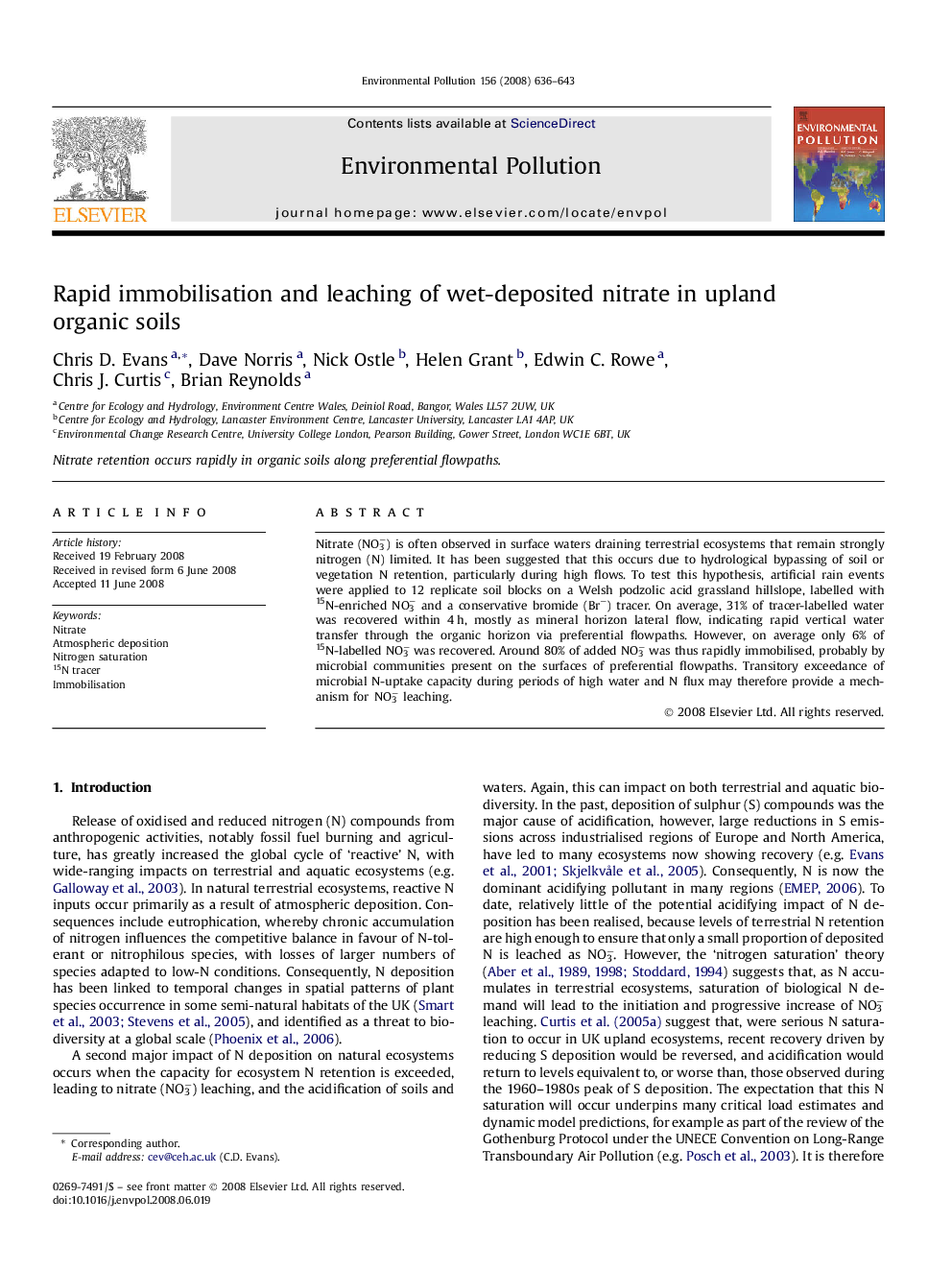| Article ID | Journal | Published Year | Pages | File Type |
|---|---|---|---|---|
| 4426192 | Environmental Pollution | 2008 | 8 Pages |
Nitrate (NO3−) is often observed in surface waters draining terrestrial ecosystems that remain strongly nitrogen (N) limited. It has been suggested that this occurs due to hydrological bypassing of soil or vegetation N retention, particularly during high flows. To test this hypothesis, artificial rain events were applied to 12 replicate soil blocks on a Welsh podzolic acid grassland hillslope, labelled with 15N-enriched NO3− and a conservative bromide (Br−) tracer. On average, 31% of tracer-labelled water was recovered within 4 h, mostly as mineral horizon lateral flow, indicating rapid vertical water transfer through the organic horizon via preferential flowpaths. However, on average only 6% of 15N-labelled NO3− was recovered. Around 80% of added NO3− was thus rapidly immobilised, probably by microbial communities present on the surfaces of preferential flowpaths. Transitory exceedance of microbial N-uptake capacity during periods of high water and N flux may therefore provide a mechanism for NO3− leaching.
